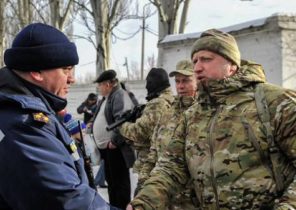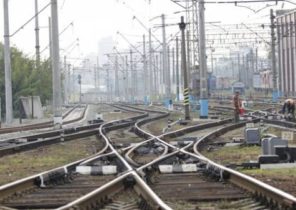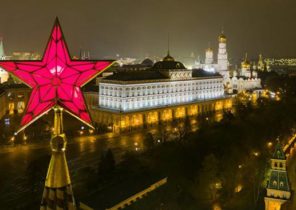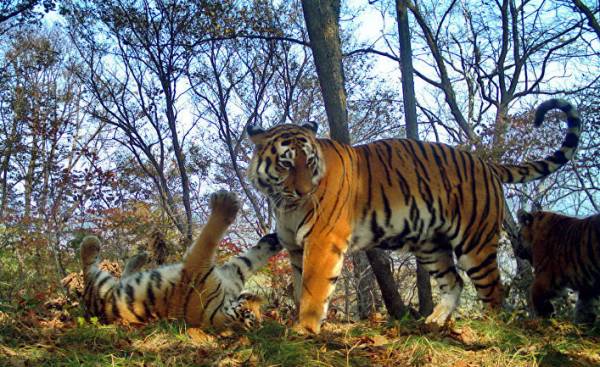
Our reader Lind, søren (Søren Lind) is saddened by the severe impact humans have on the Earth.
We are to blame for overpopulation, environmental pollution, depletion of resources and destruction of nature.
So Serena often talks about how would the world look like if we were not. The issue is so interested him that he email you wrote us into the category of “Ask a Science/Videnskaben”:
“I often think, how amazing would the world look like if there were no people. What it would be like to land on the Ground, arriving in a spaceship, if we never existed?”
To answer the hypothetical question Serena about the utopian world without people — which we called “Serendipia” — we checked with two scientists who together can give us an idea of what could be such a world.
One of them, PhD, climate scientist Danish meteorological Institute Martin Stendel (Martin Stendel) knows something about how humans have affected the atmosphere and climate of the Earth.
The other, Jens-Christian Svenning (Jens-Christian Svenning) — researcher of the VILLUM Foundation and Professor, Department of biological Sciences at Aarhus University.
Jens-Christian Svenning also leads the research project of the center of Semper Arden at the Foundation of Carlsberg on the main types of animals and their interaction with people.
People influence the three spheres
With regard to animal and vegetable life of the Earth, the world would look very different, says Jens-Christian Svenning from Aarhus University.
According to the scientist, people affected primarily on the following three areas:
1. First, on the Ground it would be much more types, and the density of population of large wild animals would be much higher than today.
2. Secondly, in most areas there would be more trees than we see today.
3. And a location would be much more humid than it is now.
The planet would be colder by degrees
Before we continue to nature, let’s take a look at the climate.
If we consider the human impact on the climate since the beginning of industrialization 150 years ago, says Martin Stendel, we will discover that without the us the average temperature of the planet would be one degree lower than today.
It finds Soren, when you put your spaceship on Earth, where never people lived.
That is, emission of large quantities of CO2 into the atmosphere, the people raised the Earth’s temperature by about one degree.
The content of CO2 in the atmosphere have now risen to nearly 410 ppm, and before industrialization, the CO2 content in the atmosphere was approximately 280 million shares — that is, we are responsible for what in the atmosphere is now twice as much CO2, and it increases the temperature on the planet.
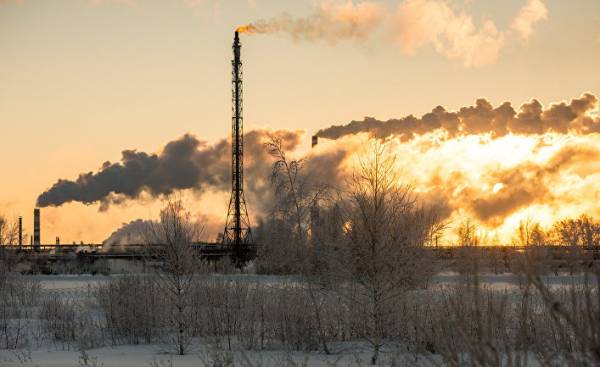 © RIA Novosti, Alexey Maligawa | go to fotosensasi refinery
© RIA Novosti, Alexey Maligawa | go to fotosensasi refinery
“Of course, it is very difficult to say how the Earth would look without us, because we have nothing to compare. But the difference is one degree very likely,” says Martin Stendel.
There are more extremes
In some places the difference between the real-world climate and climate in Serentiy more than others.
“Climate change in the past 150 years more heat the atmosphere over land than over the oceans, and stronger in polar regions than near the equator. Human influence on precipitation is not so obvious, but, generally speaking, dry areas become drier and humid — more humid, and rains there began to fall out more than snow, compared to last. Finally, we are seeing a trend where powerful phenomena associated with precipitation, become even stronger”, explains Martin, Stengel.
Sea level would be half a meter below
In addition, Serena on the planet closer to the poles will be more ice than in our world dominated by man.
Global climatic changes lead to the fact that the ice is melting, so if in Utopia Serena there are no people, there’s more ice. The global sea level by approximately two feet below.
The main reason is that global warming by one degree leads to an increase in the volume of water in the oceans, so sea levels rise.
Investigation of melting ice masses in Greenland and Antarctica, according to Martin Stengele, to play a greater role in the future, but it is not the main factor leading to the rise in sea level.
We can affect the forces of nature
According to Martin Stengele, it is possible that people in fact so changed the Earth that broke some of the fundamental forces of nature, which now remain in the game.
Some of them are called the Milankovitch cycles determine whether the Earth enters into an ice age or not.
The Milankovitch cycles describe the changes in the inclination of Earth’s axis (cycle in 41 thousand years), “rocking” of the axis of its rotation (cycle 19 to 24 thousand years), changes in the shape of Earth’s orbit (cycle of about 100 thousand years) and their joint influence on the incoming radiation of the Sun.
The coincidence of their maximum values may be the beginning of the ice age.
This can occur if both of the angle of the axis and the distance from the earth to the Sun will become so large that the ice on the poles will stop melting in the summer and begin to grow, creating a large ice sheet that moves from the polar regions towards the Equatorial latitudes.
This has happened several times in Earth’s history with periods of about 100 thousand years.
Glacial periods may be longer
However, there is a possibility that ice ages are a thing of the past as people brought out the effect of the Milankovitch cycles from the game, throwing into the atmosphere large amounts of CO2.
In other words, in the future, in the polar regions will simply not be cold enough to start the process of the glacial period, even if the astronomical conditions and will it fit.
“Of course it’s not the change that we are seeing here and now, but due to the Milankovitch cycles we could be on the way to another ice age that will never happen because of us humans. Given that a typical ice age lasts 100 thousand years, and a typical warm period — from 10 to 20 thousand, it is easy to imagine that if people did not exist, we soon would be in another ice age — not later than a few tens of thousands of years,” says Martin Stendel.
Water everywhere
But back to the nature. You can go directly to the case and to imagine that Ceren in a deserted world lands somewhere in the area of the Danish Roskilde. That he there will see?
According to Jens-Christian Svenning in the first place is a good chance that when you exit a space ship Soren will have wet feet, so first it is better to lean out and look down.
We tamed the world’s water, and it’s one of the things very much changed the world.
We’ve drained the land, built dams, redirecting the flow, eliminated the swamps and so on, and on-site wetlands had settlements or fields.
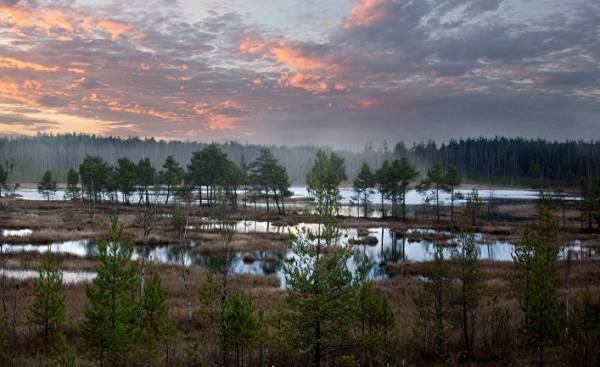 © Ministry of natural resources and ecology of the Russian Federation. Boris Bartsalkina swamp
© Ministry of natural resources and ecology of the Russian Federation. Boris Bartsalkina swamp
If we Serentiy not, then, the surface of the Earth has remained unchanged, and a lot looks quite different.
“Denmark is all drained. We even forests were drained. So in a world without people there would be a lot more water more than we can imagine. A large part of Denmark would have been a swamp, with many winding rivers that overflowed during the rains,” says Jens-Christian Svenning.
Denmark is covered with wild forests and savannas
When Soren, standing ankle-deep in a swamp, in shock look up, he sees a landscape that immediately recognizes.
In any case, he will see the gentle hills, typical Danish landscape, though the similarity probably ends.
First and foremost, attention Serena will attract the trees.
Here we mean not only trees, but also their size. If you start with a number, it becomes clear that Serentiy a large part of Denmark is covered with wild forests. In Denmark the trees gave way to fields and cities, so we have only a few percent of the original landscape.
But in a world with no people in some places the forest is tall and dark, and in others thick and overgrown shrubs, transforming the undergrowth into impenetrable green wall. And only part of the area is open, bright and a bit like what you used to see in the Park, Dyrehavsbakken North of Copenhagen.
It’s a combination of different terrain types with varying number of trees and shrubs scattered on the ground like a patchwork quilt.
The trees were more
However, the jaw has drooped Serena not only because of the density and vastness of the forest.
He immediately noticed that many trees more than any of those that he had ever seen.
Huge oaks and lindens rush high in the sky, so you need to tip the head to see their tops.
The reason is not that Serentiy trees grow faster or higher, but only that we humans thousands of years are cutting down the trees as soon as they become big enough to suffice as a construction material.
So there is no need too far to go back to the past to find trees that are superior to what we have today.
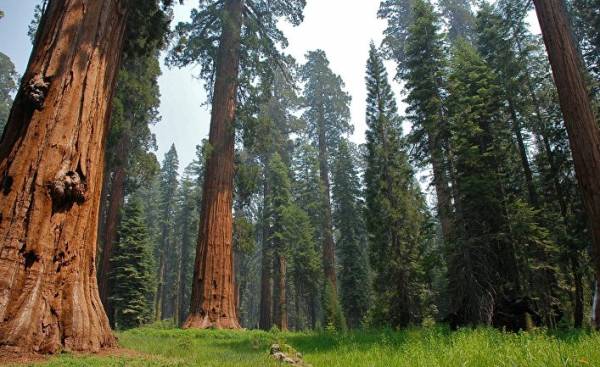 © flickr.com, Emmet ConnollyСеквойи
© flickr.com, Emmet ConnollyСеквойи
“The large trees already there for so long that we completely forgot that they are so huge. But if, for example, to examine some of the trees from which was built the Church of the Vikings, it turns out that they were much more than those that we normally see in Scandinavia today”, explains Jens-Christian Svenning.
The Danish lions in the Savannah
If we assume that søren is in a savanna-like area, so maybe before his eyes in the middle of the Savannah freely and majestically huge oaks.
Suddenly, Serena’s breath when he sees who is running among the trees.
Now in Denmark there are not many large animals, but in fact here was their natural habitat. People just destroyed them.
Under the trees in Serentiy grazing elephants, deer, bison and rhinoceros, and bison and wild horses galloping freely across the Savannah.
On the branches of oak trees asleep, leopards, and lions and wolves fight over a dead prey a little bit further.
Bears and lynx lurk in the darkness of the forest.
“The main difference between our world and a world without humans — the existence of a much greater number of large animals than we have today. In Denmark would be the same fauna as in Yellowstone or some of the large African national parks,” says Jens-Christian Svenning.
Large animals everywhere
Not only the presence of large animals is amazing, Serena. It is amazing the number of them.
 © Ministry of natural resources and ecology of the Russian Federation. Nicholas Zinovievite reserve. Kamchatka brown bear
© Ministry of natural resources and ecology of the Russian Federation. Nicholas Zinovievite reserve. Kamchatka brown bear
In fact, Jens-Christian Svenning even conducted a study in which he calculated how many large animals in the past, before people destroyed all of them.
Svenning colleagues studied the habitat of beetles that lived through the feces of large herbivores.
Scientists have discovered that in the last interglacial period about 120 million years ago the density of the habitat of large herbivores are consistent with the rate of at least 2.5 animal the size of a cow per hectare (one hectare equals 100 square meters).
“It’s a lot of animals that have a strong influence on vegetation. The greatest density was observed near water, as we see in rivers and lakes in the African Savannah,” said Jens-Christian Svenning.
The air would be crawling with giant insects
Captured by the sight of large animals, Soren says that he is eat mosquitoes, and at the foot of his crawling giant stag beetle.
Because Serentiy — a lot of not only large animals. Small insects are much more, and many of them reach sizes that Serena may not like.
People had a significant negative impact on the number of insects on Earth, especially major ones. Many insects in the last decade have disappeared. It happened because we are using pesticides in large volumes, and destroyed the natural habitat of many insects.
For example, many insects live at the expense of falling or large fallen trees, and neither in Denmark is almost gone.
“Indeed, the number of insects declined sharply. Talking about the phenomenon of the windshield. Many people remember that in the 70-ies in the Danish roads it was impossible to drive without the windshield does not become slippery from insects. Now it is not so: the insects disappear. Particularly large insects such as butterflies or beetles, are no longer in the quantities they used to. And in a world without humans their would be much greater,” says Jens-Christian Svenning.
The sea would be crawling with fish and whales
Many insects soon start to annoy Serena, and he flees to the coast to escape them.
Here he discovers that the inner waters of Denmark is very different from how they look in the human world.
According to Jens-Christian Svenning, we can compare the internal waters Serentiy how Danish water looked from a few hundred to a few thousand years ago.
The sea are full of fish, they frolic flock of large mammals like seals, orcas and other cetaceans.
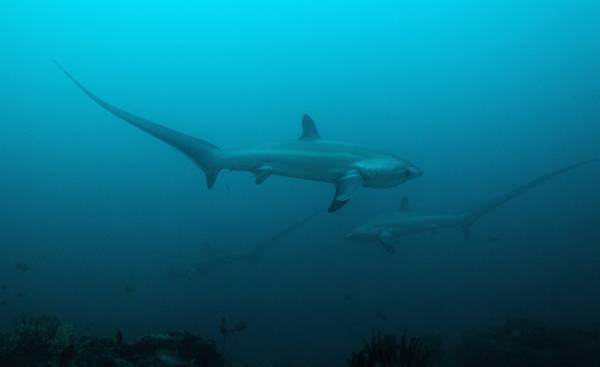 © flickr.com Klaus StiefelАкулы in the region of Central Visayas in the South-West of the Philippines
© flickr.com Klaus StiefelАкулы in the region of Central Visayas in the South-West of the Philippines
Mass of fish in Serentiy creates a food base for many birds, which now also is not much.
According to Jens-Christian Svenning, Serentiy full, for example, pelicans, cormorants (penguins of the North), there breeds a lot of flightless auks.
“There is such an abundance of marine life that we even can’t imagine. In the days of my great-grandfather in the Skjern area, it was reported that eating salmon at least three times a week, that there was abundance. It is the natural state of life in the seas around Denmark, and not what we have now,” says Jens-Christian Svenning.
Giant animals would have ruled the world
If we look at the whole world this deserted Utopia, we will see about the same as in Denmark.
In such continents as Australia, South and North America, where in our world is not so much species of large wild animals, is full of a variety of giants.
Australia Serentiy in — house giant kangaroos, huge wombats, huge turtles, huge lizards and giant flightless birds.
“In Australia, the existence of many large animals has greatly changed the condition of vegetation in some parts of the continent. Today the country is suffering from extensive fires due to dry vegetation. But if I lived here large animals, in some areas, they’d be almost destroyed, so there would little that can burn. And the landscape would have looked completely different”, explains Jens-Christian Svenning.
The same goes for South America and North America, which, for example, would have been home to many horses, camels, Buffalo and wild pigs, as well as for the millions of giant sloths, some of which could reach the size of an elephant.
Elephants also lived in this deserted America and in the Amazonian forests the trees have lived many large monkeys, and hairy spiders, which are now in many places disappeared.
As people have destroyed large animals
What large animals have neither in Australia nor in most other continents, due to this phenomenon, as defunitely — that is, the disappearance of fauna.
According to Jens-Christian Svenning, do not need so many people to the on-site fully large animals disappeared.
The main reason is that under normal conditions, large animals do not reproduce so quickly.
No, no, it is not necessary, because they do not have too many natural enemies, but in our world they do not survive. Here the most large species of animals cannot produce offspring with the same speed as the people they kill.
As a result, in today’s world, many species no longer exists, unlike Serentiy.
The island would be more unique
The last place Serena will see a noticeable difference between the real world and Serendipia is Islands around the world.
People have had a significant impact on island fauna, carrying all kinds of animals from one island to another. Now the animal life on the Islands is not so unique as might be.
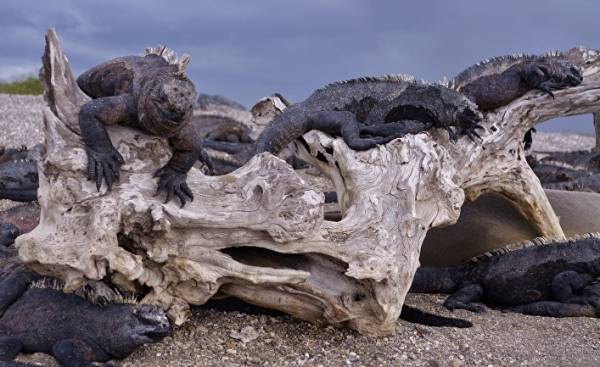 © flickr.com, pantxoramaМорские iguanas in the Galapagos Islands
© flickr.com, pantxoramaМорские iguanas in the Galapagos Islands
If we imagine that humans never existed, isolated Islands like Mallorca or the Canary Islands, according to Jens-Christian Svenning, more resembled the Galapagos.
“Often on the Islands there are larger versions of small animals and smaller big. That is, we could on many Islands in the world to see, for example, dwarf elephants and giant turtles. There dwelt the many different flightless birds, and on each island would be its own absolutely unique animals,” says Jens-Christian Svenning.



